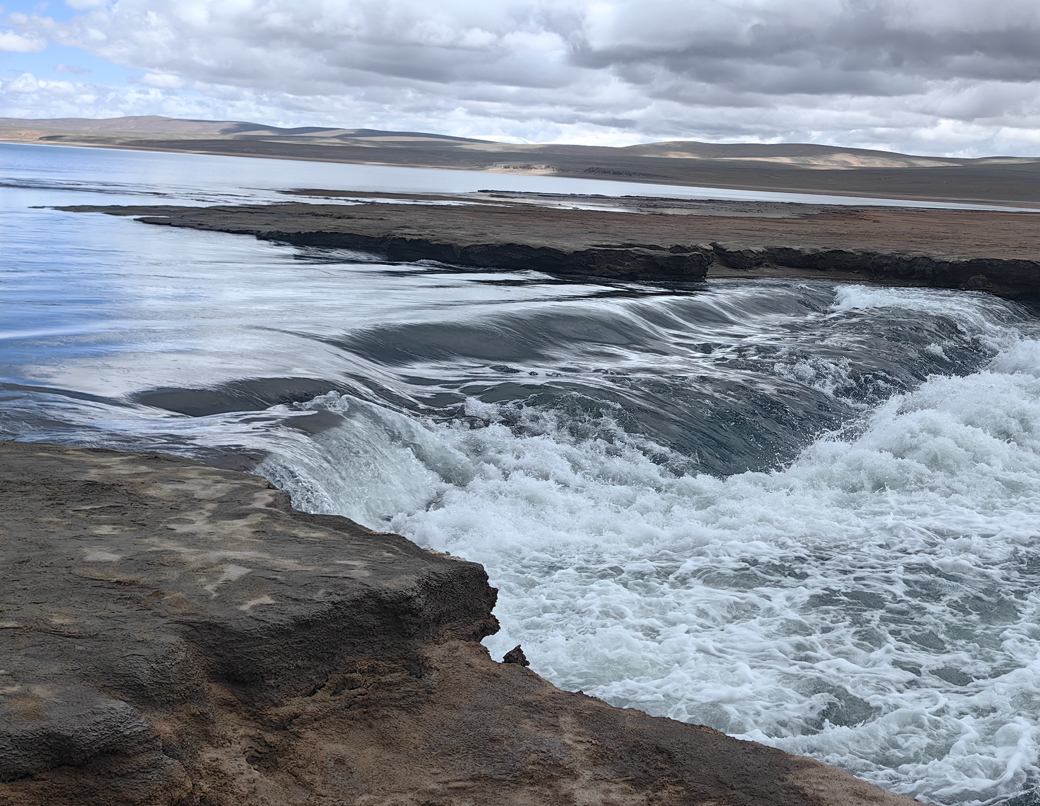
Climate change is accelerating the reorganization of river-lake systems on the Qinghai-Tibet Plateau, reshaping hydrological and ecological processes in the "Asian Water Tower". A new study led by Prof. LU Shanlong from the Aerospace Information Research Institute of the Chinese Academy of Sciences (AIRCAS) reveals the Zonag-Yanhu drainage basin, once isolated, has undergone rapid transformation since 2019, when it connected to the headwaters of the Yangtze River.
Published recently in Communications Earth & Environment, the study integrates field investigations, remote sensing data, and climate records to reconstruct nearly four decades of hydrological evolution across four key lakes in the Hoh Xil region: Zonag, Kusai, Haidingno'er, and Yanhu.
The researchers identified that a 2011 dam breach at Zonag Lake that established hydrological connectivity among the lakes, and a 2019 artificial drainage project linking Yanhu Lake to the Qingshui River—the northernmost tributary of the Yangtze River, thereby establishing a hydrological connection to the river's northern source.
The study highlights that extreme precipitation events have intensified in recent years, driving sharp lake-level fluctuations and heightening downstream flood risks. In 2024, rainfall in the region surged 195% above historical averages, widening Zonag Lake's outlet breach and increasing water discharge—forcing downstream Yanhu Lake to expand once again.
Conversely, Zonag Lake's receding shoreline has exposed large quantities of sediment, which have become new sources of sandstorms. Since 2017, the frequency of sandstorm events in the area has risen significantly, degrading the calving habitats of Tibetan antelopes along the lakeshores.
Looking ahead, climate projections indicate continued warming and wetter conditions through 2035, suggesting hydrological and ecological instability will persist. To mitigate associated risks, the research team recommends adaptive management strategies: reinforcing the outlet structure of Zonag Lake, stabilizing receding shorelines with gravel, and establishing a long-term monitoring system to prevent secondary breaches, downstream flooding in Yanhu Lake, and further ecological degradation.
The researchers noted that this study advances understanding of the climate-hydrology-ecology coupling mechanism in high-altitude regions. The findings provide critical guidance for water resource management, disaster prevention, and ecosystem conservation not only across the Qinghai-Tibet Plateau but also in similar alpine regions globally.

Outlet of Zonag Lake-July 17, 2024. (Image by AIRCAS)

86-10-68597521 (day)
86-10-68597289 (night)

52 Sanlihe Rd., Xicheng District,
Beijing, China (100864)

